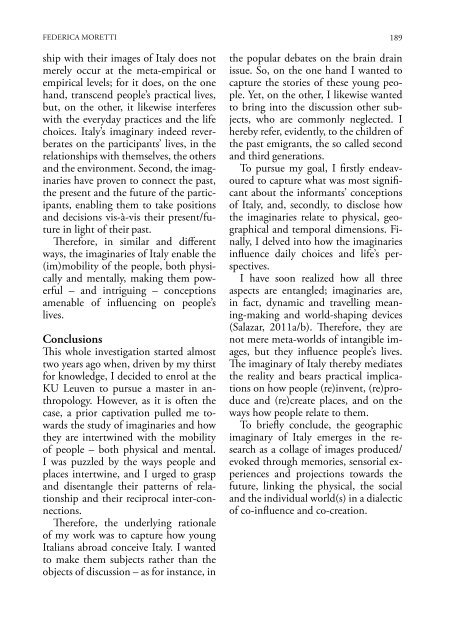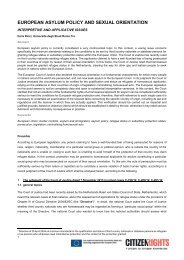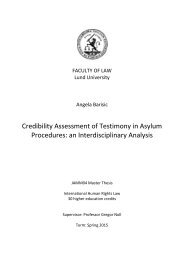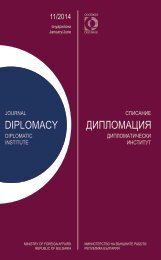AEMI
AEMI-2016-web
AEMI-2016-web
You also want an ePaper? Increase the reach of your titles
YUMPU automatically turns print PDFs into web optimized ePapers that Google loves.
FEDERICA MORETTI<br />
ship with their images of Italy does not<br />
merely occur at the meta-empirical or<br />
empirical levels; for it does, on the one<br />
hand, transcend people’s practical lives,<br />
but, on the other, it likewise interferes<br />
with the everyday practices and the life<br />
choices. Italy’s imaginary indeed reverberates<br />
on the participants’ lives, in the<br />
relationships with themselves, the others<br />
and the environment. Second, the imaginaries<br />
have proven to connect the past,<br />
the present and the future of the participants,<br />
enabling them to take positions<br />
and decisions vis-à-vis their present/future<br />
in light of their past.<br />
Therefore, in similar and different<br />
ways, the imaginaries of Italy enable the<br />
(im)mobility of the people, both physically<br />
and mentally, making them powerful<br />
– and intriguing – conceptions<br />
amenable of influencing on people’s<br />
lives.<br />
Conclusions<br />
This whole investigation started almost<br />
two years ago when, driven by my thirst<br />
for knowledge, I decided to enrol at the<br />
KU Leuven to pursue a master in anthropology.<br />
However, as it is often the<br />
case, a prior captivation pulled me towards<br />
the study of imaginaries and how<br />
they are intertwined with the mobility<br />
of people – both physical and mental.<br />
I was puzzled by the ways people and<br />
places intertwine, and I urged to grasp<br />
and disentangle their patterns of relationship<br />
and their reciprocal inter-connections.<br />
Therefore, the underlying rationale<br />
of my work was to capture how young<br />
Italians abroad conceive Italy. I wanted<br />
to make them subjects rather than the<br />
objects of discussion – as for instance, in<br />
189<br />
the popular debates on the brain drain<br />
issue. So, on the one hand I wanted to<br />
capture the stories of these young people.<br />
Yet, on the other, I likewise wanted<br />
to bring into the discussion other subjects,<br />
who are commonly neglected. I<br />
hereby refer, evidently, to the children of<br />
the past emigrants, the so called second<br />
and third generations.<br />
To pursue my goal, I firstly endeavoured<br />
to capture what was most significant<br />
about the informants’ conceptions<br />
of Italy, and, secondly, to disclose how<br />
the imaginaries relate to physical, geographical<br />
and temporal dimensions. Finally,<br />
I delved into how the imaginaries<br />
influence daily choices and life’s perspectives.<br />
I have soon realized how all three<br />
aspects are entangled; imaginaries are,<br />
in fact, dynamic and travelling meaning-making<br />
and world-shaping devices<br />
(Salazar, 2011a/b). Therefore, they are<br />
not mere meta-worlds of intangible images,<br />
but they influence people’s lives.<br />
The imaginary of Italy thereby mediates<br />
the reality and bears practical implications<br />
on how people (re)invent, (re)produce<br />
and (re)create places, and on the<br />
ways how people relate to them.<br />
To briefly conclude, the geographic<br />
imaginary of Italy emerges in the research<br />
as a collage of images produced/<br />
evoked through memories, sensorial experiences<br />
and projections towards the<br />
future, linking the physical, the social<br />
and the individual world(s) in a dialectic<br />
of co-influence and co-creation.









